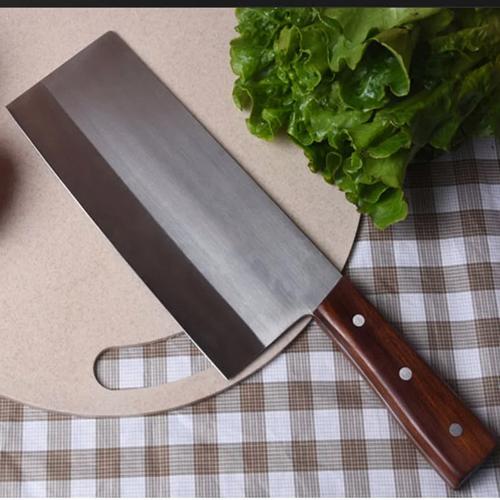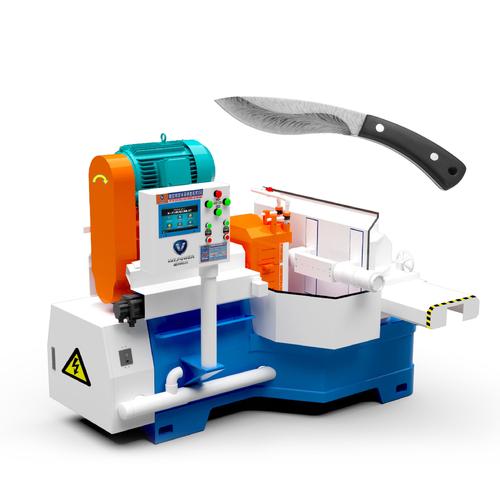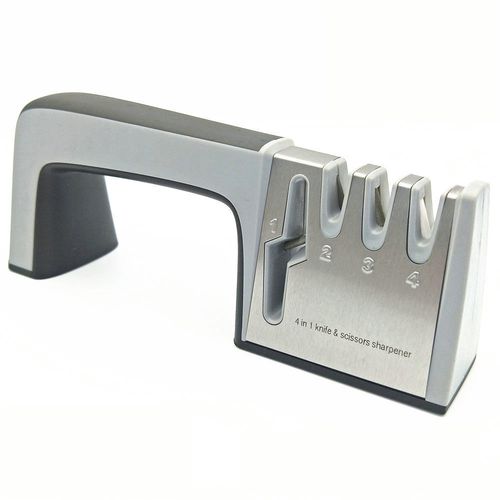

Views: 222 Author: Ella Publish Time: 2025-04-16 Origin: Site








Content Menu
● Key Differences: Kitchen Knife vs Chef Knife
● How to Choose the Right Knife for Your Needs
● FAQ: Kitchen Knife vs Chef Knife
>> 1. What is the most versatile kitchen knife?
>> 2. Can I use a chef knife for all kitchen tasks?
>> 3. What is the difference between a chef knife and a cook's knife?
>> 4. How do I maintain and sharpen my chef knife?
>> 5. Should I choose a Western or Japanese chef knife?
The world of kitchen knives can be overwhelming for both novice cooks and culinary professionals. Among the most common sources of confusion is the distinction between a “kitchen knife” and a “chef knife.” Are they the same? Do they serve different purposes? Which one should you invest in for your kitchen? This comprehensive guide will demystify these terms, explore the real differences, and help you make informed decisions about your knife arsenal.

A kitchen knife is a broad term encompassing any knife designed for food preparation. This includes a wide variety of blades, each specialized for different tasks:
- Paring knives for peeling and small tasks
- Utility knives for general slicing
- Bread knives with serrated edges
- Boning knives for separating meat from bones
- Carving knives for slicing cooked meats
- Santoku knives for precise vegetable and fish cuts
- Chef knives for all-purpose chopping, slicing, and dicing[1][5][12]
Essentially, if it's a knife you use in the kitchen, it's a kitchen knife.
A chef knife—sometimes called a cook's knife—is the workhorse of the kitchen. It is specifically designed to handle most cutting tasks, from mincing herbs to slicing meat and dicing vegetables. Its versatility makes it the most essential knife in both home and professional kitchens[1][2][5][12].
Typical features of a chef knife:
- Blade length: 6 to 14 inches (8 inches is most common)
- Shape: Broad, slightly curved blade with a pointed tip
- Uses: Chopping, slicing, dicing, mincing, and even disjointing some cuts of meat
- Not ideal for: Cutting bones, carving dense meat, or precision tasks like peeling[1][5][12]
While all chef knives are kitchen knives, not all kitchen knives are chef knives. The table below summarizes the main distinctions:
| Feature | Kitchen Knife (General) | Chef Knife (Specific) |
|---|---|---|
| Definition | Any knife used for food prep | All-purpose knife for most tasks |
| Blade Length | Varies (2–14 inches) | 6–14 inches (8" most common) |
| Blade Shape | Varies (serrated, straight, curved) | Broad, curved, pointed tip |
| Main Uses | Specialized tasks (peeling, slicing) | Chopping, slicing, dicing, mincing |
| Versatility | Task-specific or general | Highly versatile |
| Typical Materials | Stainless, carbon steel, ceramic | High-carbon stainless or carbon steel |
| Weight & Balance | Varies | Balanced for rocking/chopping motion |
| Skill Level | Beginner to professional | Essential for all skill levels |

Understanding the parts of a chef knife helps clarify its versatility and design:
- Blade: The main cutting surface, slightly curved for rocking motion
- Edge: The sharpened side of the blade
- Heel: The rear part of the blade, used for cutting tough ingredients
- Tip: The front quarter, ideal for delicate tasks and piercing
- Spine: The unsharpened back of the blade, adds strength
- Tang: The part of the blade extending into the handle, affecting balance[12]
- Handle: Where you grip the knife, made from wood, plastic, or composite
A well-equipped kitchen may include several types of knives, each with a unique purpose:
- Paring Knife: Small, sharp blade for peeling and intricate work
- Utility Knife: Mid-sized, versatile for slicing and small chopping
- Bread Knife: Long, serrated blade for slicing bread and soft fruits
- Boning Knife: Thin, flexible blade for deboning meat and fish
- Carving Knife: Long, thin blade for slicing cooked meats
- Santoku Knife: Japanese all-purpose knife, great for vegetables and fish
- Cleaver: Heavy blade for chopping through bones and tough vegetables
- Chef Knife: The all-rounder for most kitchen tasks[1][5][12]
Chef knives come in two primary styles: Western (German/French) and Japanese.
Each has unique characteristics:
| Feature | Western Chef Knife | Japanese Chef Knife |
|---|---|---|
| Blade Thickness | Thicker, heavier | Thinner, lighter |
| Blade Shape | Curved for rocking motion | Straighter for slicing |
| Steel Hardness | Softer, more durable | Harder, holds edge longer |
| Maintenance | Easier to sharpen, less brittle | Requires whetstone, more brittle |
| Cutting Technique | Rocking motion | Up-and-down slicing |
| Best For | Chopping hard vegetables, herbs | Precision cuts, fish, soft foods |
Consider the following factors:
- Primary Use: What do you cook most? A chef knife covers 80% of tasks, but you may need a bread knife or boning knife for specific needs[5][8].
- Hand Size and Comfort: Try different handle shapes and sizes to find the best fit[7].
- Blade Material: High-carbon stainless steel is popular for its balance of sharpness and durability[11].
- Weight and Balance: A well-balanced knife reduces fatigue and increases control[8].
- Maintenance: Consider ease of sharpening and care requirements.
Proper care ensures your knives last longer and perform better:
- Sharpen regularly: Use a whetstone for best results; honing rods maintain the edge between sharpenings[4][8].
- Hand wash only: Avoid dishwashers, which can damage blades and handles[8].
- Store safely: Use a knife block, magnetic strip, or blade guard.
- Cut on proper surfaces: Use wood or plastic cutting boards, never glass or marble[8].
- Dry immediately: Prevent rust and corrosion by drying after washing.
1. Santoku vs Chef's Knife: 5 Key Differences and When to Use Each
2. Santoku vs Chef's Knife: Which Is Better For You?
The distinction between a kitchen knife and a chef knife lies in specificity and versatility. A kitchen knife refers to any blade designed for food preparation, while a chef knife is the all-purpose tool that every cook—professional or amateur—should own. Its curved, pointed blade and balanced design make it ideal for most kitchen tasks, from chopping and slicing to mincing and dicing.
While specialized kitchen knives excel at particular jobs, the chef knife's adaptability makes it the backbone of any kitchen. When choosing knives, consider your cooking habits, comfort, and maintenance preferences. Investing in a high-quality chef knife will elevate your culinary experience and efficiency.

A chef's knife is generally considered the most versatile kitchen knife. It can handle chopping, slicing, dicing, and mincing a wide variety of foods, making it indispensable for most cooks[4][8].
While a chef knife covers about 80% of kitchen tasks, it is not ideal for cutting bones, slicing bread, or performing intricate tasks like peeling. Specialized knives are better suited for those jobs[1][5][12].
The terms are often used interchangeably, but some sources distinguish a chef's knife as being heavier, more durable, and suitable for a wider range of tasks compared to a lighter, less durable cook's knife[9][12].
Sharpen your chef knife regularly using a whetstone or professional sharpening service. Hone it between uses to maintain the edge, and always hand wash and dry immediately to prevent rust[4][8].
Western chef knives are thicker, heavier, and better for rocking motions and tough vegetables. Japanese chef knives are thinner, sharper, and excel at precision slicing, especially for fish and softer foods. Your choice depends on your cooking style and preferences[2][10].
[1] https://kamikoto.com/blogs/fundamentals/understanding-kitchen-knives-types
[2] https://www.escoffier.edu/blog/culinary-arts/different-knives-and-the-best-uses-for-each/
[3] https://www.youtube.com/watch?v=N46Bany7mus
[4] https://www.thebambooguy.com/blogs/kitchen-knives/frequently-asked-questions-about-kitchen-knives
[5] https://madeincookware.com/blogs/types-of-kitchen-knives
[6] https://www.youtube.com/watch?v=jjJek9blD5U
[7] https://blog.russellhendrix.com/buying-guides/professional-chef-and-kitchen-knife-buying-guide/
[8] https://elementknife.com/pages/common-questions-about-kitchen-knives
[9] https://tradingpieces.co.nz/differences-a-chefs-knife-and-a-cooks-knife/
[10] https://www.seriouseats.com/western-versus-japanese-style-chefs-knives-6751328
[11] https://www.kitchenkapers.com/pages/how-to-choose-kitchen-knives
[12] https://www.webstaurantstore.com/guide/538/types-of-knives.html
[13] https://cdn.sanity.io/images/fr9flhkd/main/7be796336f8ba5b9c26cf0f31d73e9533f4b8b1a-1800x1000.jpg?fm=webp&q=75&w=1280&sa=X&ved=2ahUKEwjP5tTj4dyMAxVCrYkEHdOLNYYQ_B16BAgBEAI
[14] https://stock.adobe.com/search?k=chef+knife
[15] https://www.youtube.com/watch?v=QgVyN6Lpiuc
[16] https://www.pinterest.com/pin/38562140548552656/
[17] https://www.youtube.com/watch?v=EUiGhc9h5Ic
[18] https://www.everythingkitchens.com/knife-education-guide.html
[19] https://www.youtube.com/watch?v=LO35cdWL1MQ
[20] https://www.istockphoto.com/photos/kitchen-knife
[21] https://www.reddit.com/r/chefknives/comments/ngdsyy/the_video_that_helped_explain_the_basics_of_chef/
[22] https://www.youtube.com/watch?v=Rq6DHG7iC0E
[23] https://www.reddit.com/r/chefknives/comments/12p0fmx/good_cutting_technique_video_for_beginners/
[24] https://www.youtube.com/watch?v=xqgW-nFJIOw
[25] https://shun.kaiusa.com/blade-shapes
[26] https://www.seriouseats.com/the-best-essential-knives
[27] https://www.kitchenknifeforums.com/threads/help-me-choose-chef-knife.53626/
[28] https://artisanrevere.com/blogs/education/knife-faq-and-problem-solving
[29] https://www.youtube.com/watch?v=GjHaMLsHUUQ
[30] https://www.bladeforums.com/threads/question-for-the-kitchen-knife-folks-and-chefs.1298526/
[31] https://www.reddit.com/r/knives/comments/16m7jyi/question_on_cooking_knifes/
[32] https://www.bladeforums.com/threads/newbie-question-about-chefs-knives.1240958/
[33] https://www.bladesmithsforum.com/index.php?%2Ftopic%2F32117-some-kitchen-knife-questions%2F
[34] https://www.youtube.com/watch?v=lIf4_LOj2do
[35] https://www.reddit.com/r/cookingforbeginners/comments/za2wx4/is_it_always_best_to_use_a_chefs_knife/
[36] https://www.reddit.com/r/food/comments/bpyiy/santoku_vs_chefs_knife/
[37] https://www.reddit.com/r/Cooking/comments/552j5l/know_your_knives_a_guide_to_kitchen_knives_oc/
[38] https://sharpedgeshop.com/blogs/knives-101/how-to-choose-a-kitchen-knife
What's the Difference Between a Kitchen Knife and a Carving Knife?
What's the Difference Between a Paring Knife and a Kitchen Knife?
What's the Difference Between High Carbon and Stainless Steel Kitchen Knives?
What's the Difference Between Forged and Stamped Kitchen Knives?
What's the Difference Between a Chef's Knife and a Kitchen Knife?